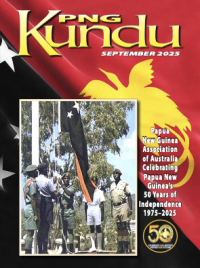Browse our Photo Galleries
Contributions are welcome and may be used in our quarterly journal. Please include date (approximate is fine), names and place. Permission to use photographs should be obtained from the authors or check with PNGAA. Following any approval to re-use photographs, both the photographer and PNGAA need acknowledging.
John Harold Margetts was born at Higham, near Chester, England, on 17 May 1884. He studied for the ministry of the Methodist Church at Queen’s College, and came to Australia as a minister in 1910. In 1913 he went to German New Guinea as a Methodist Missionary and was stationed on Neu Pommern (New Britain). In 1914 he was given the additional role of Chaplain to the ANMEF (Australian Naval & Military Expedionary Force). He served for twenty-two years in German New Guinea and then, following the mandate given to Australia by the League of Nations at the end of WW1, the Mandated Territory of New Guinea, at several centres on New Britain and in the Duke of York Islands. He became fluent in the language of the Tolai, Kuanua or Tinata Tuna, which served as the main language of the Methodist Mission, and wrote a number of hymns in that language. He was a devoted pastor and a man of gentle nature. In the late 1920s he was appointed Chairman of the District, but this administrative position, in which hard decisions had sometimes to be made or persons disciplined, did not suit his nature, and he was glad to return to pastoral work when another Chairman was available. When Rabaul’s indigenous workers went on strike for higher wages in 1929, they gathered at Catholic and Methodist Mission centres on the outskirts of Rabaul. Margetts listened sympathetically to those who gathered at the Methodist centre, Malakuna, and visited the Administrator’s office to plead for them not to be punished. He then advised the strikers to return to work; when they said they were afraid they would be beaten, he personally shepherded them back to their places of work in the town, again pleading for them to be treated leniently. For this, he was verbally attacked by many Australian residents, and his pleas were generally disregarded. It was said that “He wasn’t a very effective Chairman, but he was so kindhearted he wouldn’t hurt a fly.” Margetts died at Kabakada on 14 July 1935, and was buried in the European Cemetery, Rabaul. He was survived by his wife Adelaide, who returned to Australia. (Our thanks to Rev. Neville Threlfall for the above information)



























